Last Updated: July 23, 2018 Abhishek Gurung
A trip off the beaten track brought me to one of the best places to see wildlife at the Elephant Conservation and Care Centre (ECCC) and Agra Bear Rescue Facility (ABRF).
A blissful little animal kingdom which sloth bears and elephants call home, Wildlife SOS is an exuberant place to be in! Upon hearing exalting reviews, I did a little research on my own and decided to visit the Wildlife SOS conservation centre on a weekend and indeed my decision could not have been better and more rewarding.
Entering a Small Haven for Elephants
A day in life with the Elephants
Maya and Phoolkali Greet me with Smile
A short drive for about 20 minutes from Astha City (Wildlife SOS volunteer house) where i spent the previous night. This is a six bedroom house within a gated community where volunteers coming to help Wildlife SOS get to stay in comfortable rooms and have their meals during their stay. As i was driven to the Elephant Care Center, the vehicle traversed through tiny village houses and the bustling NH 19 (Mathura-Agra road) and soon it brought me to a safe haven for the elephants. I was greeted by two WSOS Education Officers from the Elephant Conservation and Care Center . Can’t deny the fact that, a feeling of thrill took hold of me as I approached the Elephant Care and Conservation Centre. A feeling so strong I almost gasped! Such quiet surroundings with greenery everywhere, ‘it is indeed an ideal place for the elephants,’ I said to myself.
I am the new fruit ninja…haiya!
Here you go Bijli, a melon for you
My day at the centre started by getting introduced to the elephants (I could imagine them smile as I approached closer). They were rather friendly than shy, I gave a pat on one of the elephants’ trunk and offered them sugarcane – and that was a beginning of a new friendship . Time passed by in ECCC as I along with fellow volunteers from various countries chopped bucketful of fruits to feed the 12 female elephants. I loved the fact how one of the elephants, Bijli also known as Sai-Geeta grabbed piece by piece with her trunk as I continuously fed her with a bucket full of assorted fruits, while she was given a bath by other volunteers.
ahhh! Bijli get a relaxing bath
This continued for a while till the time she finished her bath. What I was eagerly waiting for was the walk with the elephants that had to begin at 4 PM in the evening. At the scheduled time, the gates opened, and there entered Mia and Rhea (two elephants rescued by WSOS from a circus in Tamil Nadu). The sky had turned slightly pink and a gush of soothing wind gently touched my skin, it gave an overwhelming feeling to see these gentle giants play out in the open, scratching their body on trees and lying down on the cool ground as they threw the soft sand on their backs like talcum powder after a shower. I enjoyed the walk with the elephants which was a unique experience and also very informative. I learnt about elephant behaviour and also about the efforts of WSOS to protect elephants in India.
An Evening Stroll n the Open Field
Story of the Elephants
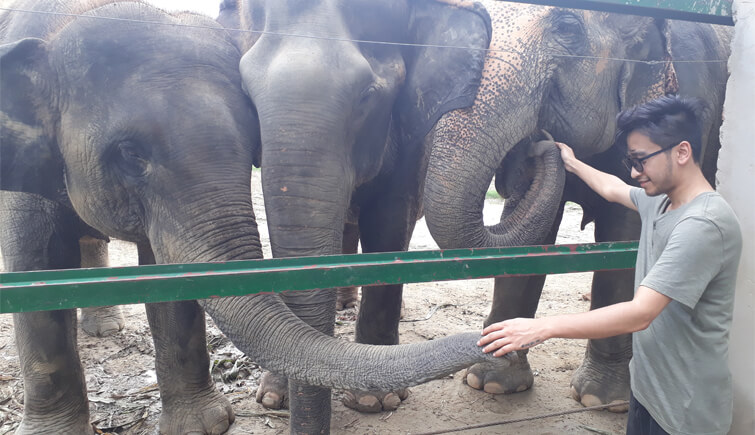
Here, I introduce Peanut, Suzy and Coconut
These majestic mammals looked playfully at me as I stepped closer. I was then introduced to Peanut, Suzy and Coconut (Coco in short), all three had been through great pain and suffering in the past before WSOS rescued them from their traumatic past life. A peanut lover, thus called by the same name, is an 8 year old elephant who also loves mud baths and watermelon; she is the youngest amongst all others. Peanut was rescued from a circus at the age of 6 and so was Coco, her best friend. Coconut at the age of 12 was brought in ECCC by WSOS and she acts like a mother to Peanut. She loves sugarcane and playing with the rubber toys provided by the elephant keepers but sometimes you may see her sneaking treats from the keepers’ bag.
The 67 year old Suzy, one of the first few circus rescues, spends her time with her two besties, Asha and Lakhi. She enjoys every minute soaking herself in the river and slurping watermelon juice. ECCC, currently shelters 21 elephants (12 females and 9 male elephants) each with heart-wrenching stories. The goal of Wildlife SOS is to spread awareness about the endangered elephants in India and to prevent elephants from being poached for captivity and ivory. I learnt to my horror how baby elephants are captured from the wild and then trained using brutal methods before being trained using painful and cruel methods so they can be ridden by tourists or used in temples, processions or weddings. So i urge all readers to never ride elephants anywhere you go – whether it be jaipur or kerala or thailand. Please remember that it is your business that causes the poaching of elephants. If you love elephants please go and volunteer with Wildlife SOS. It is indeed a life changing experience.
A day in life with the Sloth Bears
My second day, started with a piping hot cup of chai tea followed by a short 15 minute ride to Agra Bear Rescue Facility (ABRF). This ‘temple of hope’ is located inside the Soor Sarovar Wildlife Sanctuary, and is home to nearly 200 endangered sloth bears. My first impression visiting ABRF was overwhelming. How well-maintained the rescue centre was and such courteous staff!
Too excited or curious!
One of the WSOS education officers offered me an educational tour to different enclosures, after a short orientation video that described the traumatic conditions these bears lived in before they were rescued by Wildlife SOS. I also learnt what kind of medical care and rehabilitation efforts the bears received at the Agra Bear Rescue Facility. Now the bears in ABRF live amid lustrous greenery in large forested enclosures, truly free and leisurely (remove walks) and they keep busy (remove by) playing in the hammocks and other enrichments built by the WSOS volunteers and staff. Other bears laze around by the pools enjoying a truly dignified life.
As a gush of wind from the Yamuna river refreshes me, a ferry across the river awaits to take me to the bear sanctuary extension, where more bears are sheltered in a 160 acre forested area. In the premises, I got an urge to explore in depth about the bears, and where the organic food is grown for the consumption of staff and animals. It so happens, just a few minutes from the bear sanctuary lies an open field which Wildlife SOS cultivates to grow varied vegetables to feed the bears and their staff. I love this sustainable model they follow.
It is always sad to say goodbye
Story of the Sloth Bears
Hay there cutie!
Meet Mowgli, the youngest bear of the lot. He was rescued from Sanjay Dubri Tiger Reserve of Madhya Pradesh. As I went close to his den, he slowly shook his head (like he was stretching) and quickly climbed the tree, how cute and curious he looked. Mowgli was just ten-week old cub when he was first brought to ABRF, now growing confident and more accustomed to his surroundings; he too has a heart wrenching story. Click here to read Mowgli’s story. All the sloth bears at the facility have either been rescued from the poachers or from the Kalanders who use bears for their way of income, a four century-old tradition ‘dancing bears.’ Rani, the very first sloth bear to be rescued by WSOS in 2002 is a beauty. Over years of living under cruel circumstances, today, Rani has transformed into a strong and spirited bear. However, she is known for her rather fierce temperament (towards newcomers). Rani’s best friend is Mangee bear and she loves playing with her other three furry companions Chotu, Bijli and Butterball.
Success Stories of Wildlife SOS
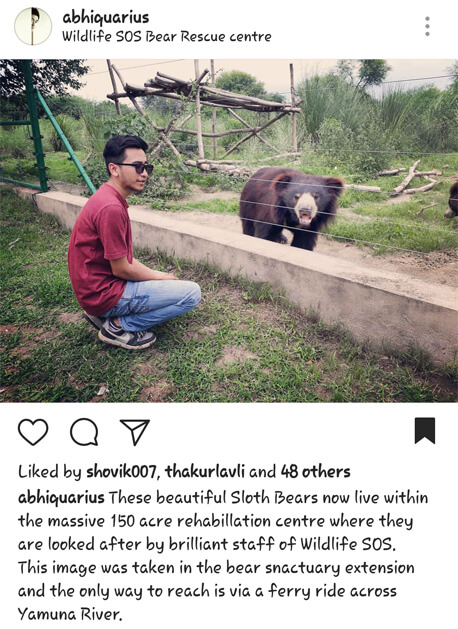 Working round the clock, the team of WSOS has achieved and carried out several nerve-racking rescue operations. Not just for the sloth bears and elephants but also for a number of leopards, tigers, pangolins, snakes, deer, turtles, hyenas and blue bulls. From the crying elephant, Raju to the world’s unluckiest elephant, Mohan; a few mentions amongst the many are here in a form of a short summary. Subjected to brutality and suffering for over 50 years, Mohan can finally spend his retirement days in the protective care of WSOS at the ECCC. Thanks to the persistent and continuous efforts of Wildlife SOS of two years to win him freedom. Another nail-biting operation WSOS undertook was a mission of a leopard rescued from 60 feet deep well in a remote village in Maharashtra. A wooden platform prepared by the local villagers was lowered so the animal could cling to it before jumping into the trap cage lowered to capture the leopard. The leopard was later released in safe forests of Maharashtra. Severely wounded, left to die or living under worst circumstances, there are many such heart-breaking stories of the unfortunate wild animals that now live under the care of Wildlife SOS.
Working round the clock, the team of WSOS has achieved and carried out several nerve-racking rescue operations. Not just for the sloth bears and elephants but also for a number of leopards, tigers, pangolins, snakes, deer, turtles, hyenas and blue bulls. From the crying elephant, Raju to the world’s unluckiest elephant, Mohan; a few mentions amongst the many are here in a form of a short summary. Subjected to brutality and suffering for over 50 years, Mohan can finally spend his retirement days in the protective care of WSOS at the ECCC. Thanks to the persistent and continuous efforts of Wildlife SOS of two years to win him freedom. Another nail-biting operation WSOS undertook was a mission of a leopard rescued from 60 feet deep well in a remote village in Maharashtra. A wooden platform prepared by the local villagers was lowered so the animal could cling to it before jumping into the trap cage lowered to capture the leopard. The leopard was later released in safe forests of Maharashtra. Severely wounded, left to die or living under worst circumstances, there are many such heart-breaking stories of the unfortunate wild animals that now live under the care of Wildlife SOS.
The role of WSOS for Elephants and Sloth Bears

Photo: Sloth Bears Cuddled up into one Giant Fur Ball | Wildlife SOS
The role of WSOS for Elephants and Sloth Bears One of the best places for wildlife conservation in India, Wildlife SOS is a dedicated NGO that has a wonderful team of veterinarians, wildlife biologists and dedicated professionals that focus on the wellbeing of animals in distress. They make sure the elephants and sloth bears have every possible opportunity and facility to recover and be rehabilitated at the rescue and conservation centre. Building natural enrichments and offering wild animals natural environment is what the Wildlife SOS team focuses on.

Photo: Peanut Enjoying her time in the Pool | Wildlife SOS
For distressed elephants forced to live under unnatural and harsh conditions in Indian cities, urgent action had to be taken . This is why, Wildlife SOS established the Elephant Conservation and Care Centre in 2010 in collaboration with the Forest Department and several elephants have been rescued and brought here from various places around India like Tamil Nadu, Andhra Pradesh, Maharashtra, Madhya Pradesh to name a few.

Photo: Bears Playing on their Hammock | Wildlife SOS
Sloth Bears on the other hand have been rescued from the nomadic gypsy Kalander community that used the bears for street performance for their livelihood. WSOS achieved success with the sloth bears by offering support to the Kalandar community by way of alternative livelihoods and seed funds for nearly 3000 families to wean them away from their dependency on exploiting the bears for their livelihood. WSOS also started women empowerment and skill development programs to support the Kalandar community while also providing education support to over 1600 children from these communities.
WSOS eventually rescued 628 bears that were voluntarily surrendered by the kalandars and in return have even offered employment to youngsters from the communities at WSOS rescue centers.
You may also find some traditional handicrafts made by the local communities available for purchase at the gift shop where the proceeds go to support them.

Photo: Elephant Sanjay Taking a Nice Refreshing Bath | Wildlife SOS
The work Wildlife SOS stresses upon are the tribal rehabilitation programs that focus on how to conserve wildlife by giving conservation education about environment and animals. Wildlife rescue and rehabilitation of elephants is also looked upon, the WSOS team takes action to safeguard the abused mammals by bringing them from the streets to ECCC. Apart from that, WSOS runs a 24-hour animal rescue hotline around Delhi NCR for rescuing wildlife in distress and resolving human wildlife conflicts. They also take initiative to educate public by conducting awareness programs in which they discuss poaching threats, illegal wildlife trade and also protection of natural habitat of wildlife.
Volunteering in Wildlife SOS

Photo: Sloth Bear Playing with Tyre Enrichment | Wildlife SOS
It is always a soul satisfying experience to contribute something for the animals. In this case why not give some love to the animals by visiting Wildlife SOS for wildlife conservation volunteering. From preparing meals for the elephants and bears to even assisting with feeding them. Besides, who can resist giving a bath to the elephants and walking with them, it is a feeling that can’t be described, only experienced. Here, the volunteers’ duties are cutting fruits, making enrichment treats and structures, building hammocks for the sloth bears and feeding or giving the elephants a bath. You can click here for better understanding.
If you are unable to spare the time to volunteer, you can always make a donation for the support of wildlife conservation or sponsor any one of the endangered species found here like that of Indian Elephant. You can also visit the two centers anytime of the year and experience once in a lifetime opportunity of being very close to the wild.
Wildlife SOS Website: www.wildlifesos.org
To learn more about Volunteering: E-Mail at volunteer@wildlifesos.org
Contact Person: Madhumita – 07351455544/ 07708568098; Bheema – 09927099980
Published: 08 Aug, 2017
Abhishek Gurung is a writer whose passion for food and travel is an unending affair. He likes going on treks and camping in the woods, loves exploring forts and architecture, he is a cycle enthusiast who likes to contribute something to the environment, travel photography and videography is another interest as he sees life in a cinematic point of view. He likes the idea of living in offbeat destination where the mode of communication is to interact with each other. Coming from Nagaland, he has visited some beautiful valleys and remote villages and appreciates nature as it is and as it should be.


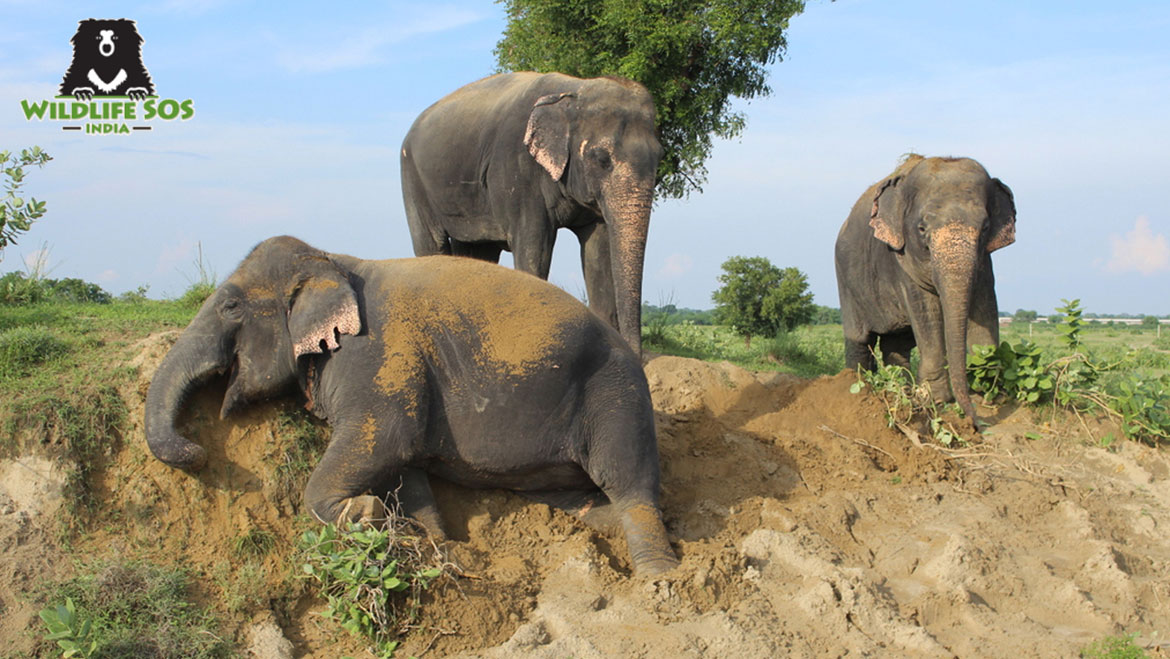
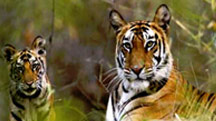 6 Nights / 7 Days
6 Nights / 7 Days 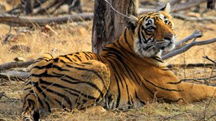 16 Nights / 17 Days
16 Nights / 17 Days 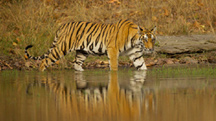 10 Nights / 11 Days
10 Nights / 11 Days 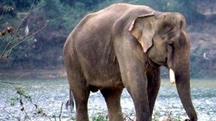 15 Nights / 16 Days
15 Nights / 16 Days 
 Working round the clock, the team of WSOS has achieved and carried out several nerve-racking rescue operations. Not just for the sloth bears and elephants but also for a number of leopards, tigers, pangolins, snakes, deer, turtles, hyenas and blue bulls. From the crying elephant, Raju to the world’s unluckiest elephant, Mohan; a few mentions amongst the many are here in a form of a short summary. Subjected to brutality and suffering for over 50 years, Mohan can finally spend his retirement days in the protective care of WSOS at the ECCC. Thanks to the persistent and continuous efforts of Wildlife SOS of two years to win him freedom. Another nail-biting operation WSOS undertook was a mission of a leopard rescued from 60 feet deep well in a remote village in Maharashtra. A wooden platform prepared by the local villagers was lowered so the animal could cling to it before jumping into the trap cage lowered to capture the leopard. The leopard was later released in safe forests of Maharashtra. Severely wounded, left to die or living under worst circumstances, there are many such heart-breaking stories of the unfortunate wild animals that now live under the care of Wildlife SOS.
Working round the clock, the team of WSOS has achieved and carried out several nerve-racking rescue operations. Not just for the sloth bears and elephants but also for a number of leopards, tigers, pangolins, snakes, deer, turtles, hyenas and blue bulls. From the crying elephant, Raju to the world’s unluckiest elephant, Mohan; a few mentions amongst the many are here in a form of a short summary. Subjected to brutality and suffering for over 50 years, Mohan can finally spend his retirement days in the protective care of WSOS at the ECCC. Thanks to the persistent and continuous efforts of Wildlife SOS of two years to win him freedom. Another nail-biting operation WSOS undertook was a mission of a leopard rescued from 60 feet deep well in a remote village in Maharashtra. A wooden platform prepared by the local villagers was lowered so the animal could cling to it before jumping into the trap cage lowered to capture the leopard. The leopard was later released in safe forests of Maharashtra. Severely wounded, left to die or living under worst circumstances, there are many such heart-breaking stories of the unfortunate wild animals that now live under the care of Wildlife SOS.













